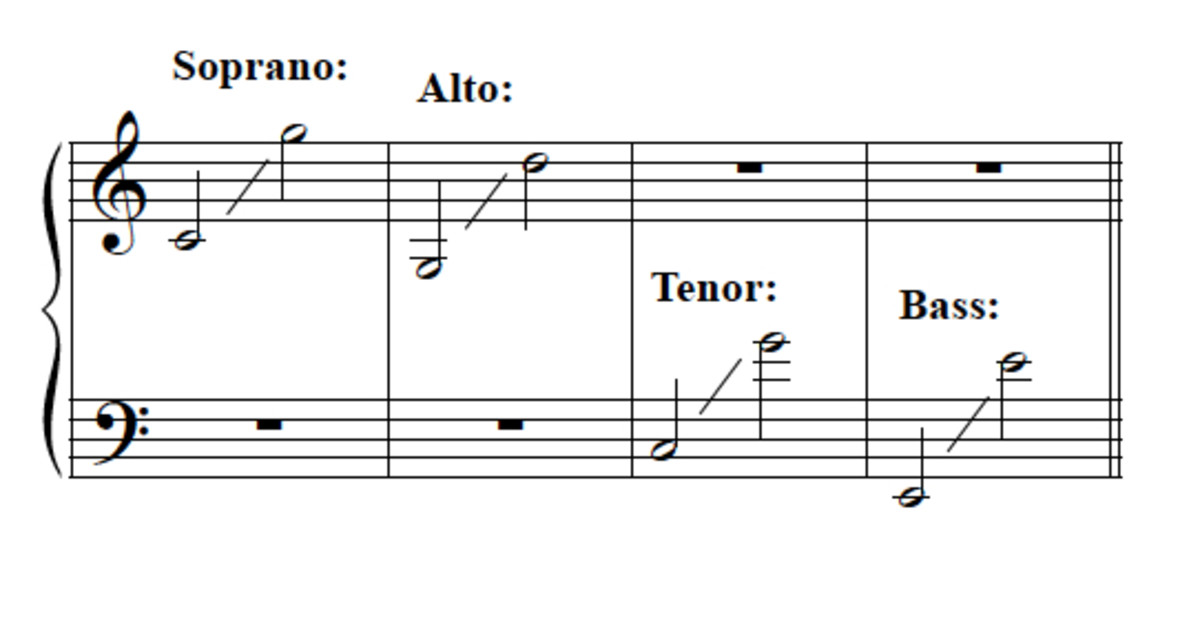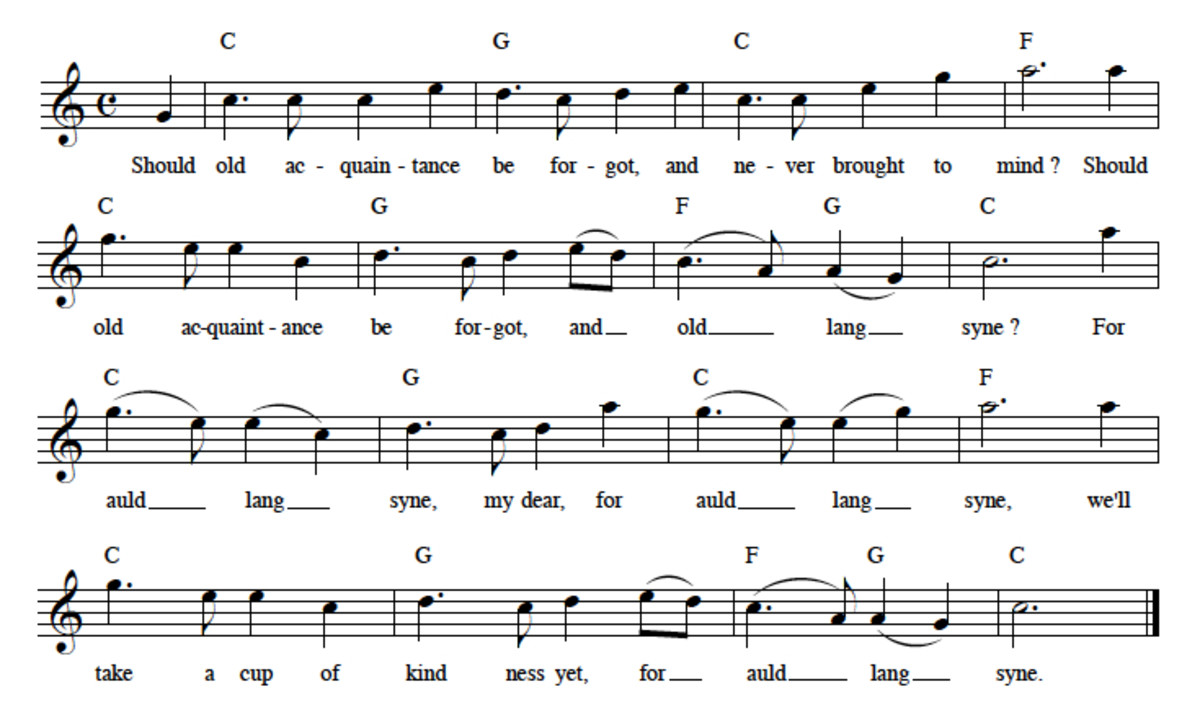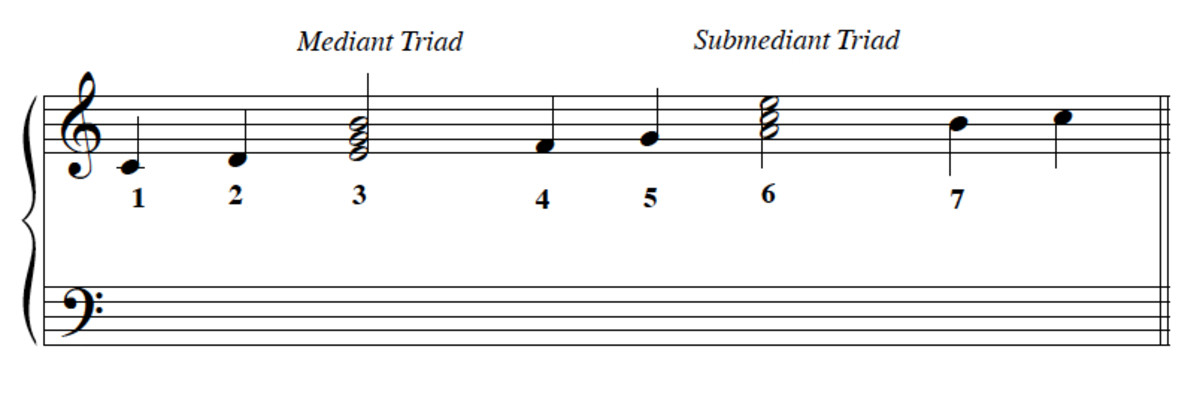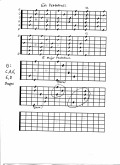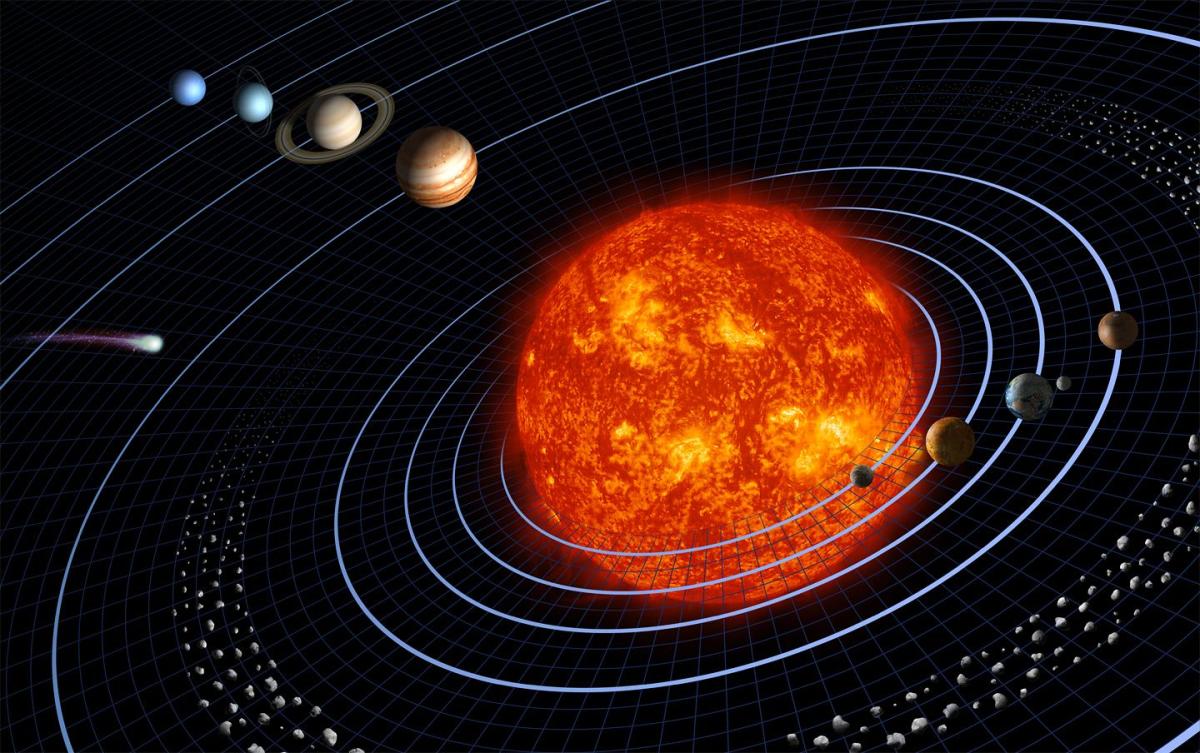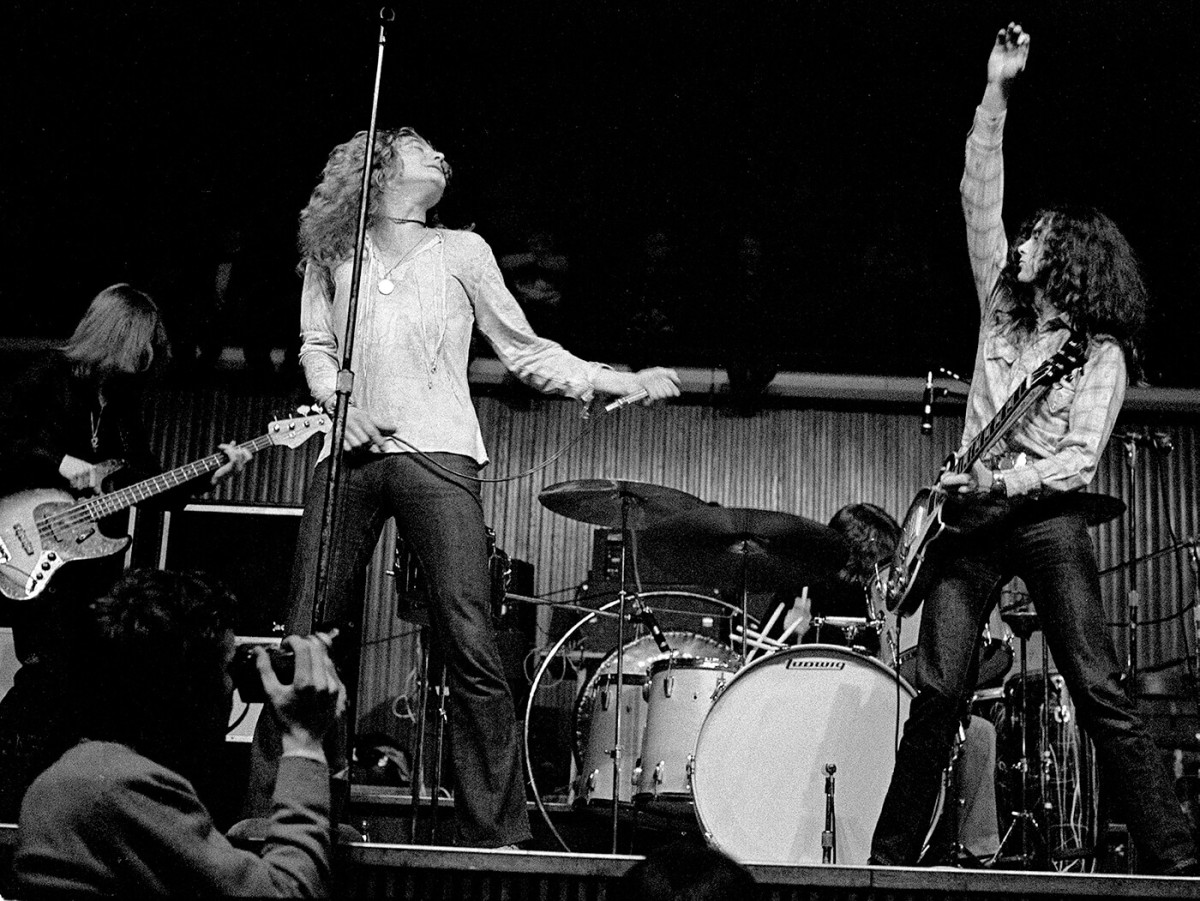Scale Runners #1: Ionian Scales
Hello there friends, and welcome to the first "official" installment of Scale Runners. Last time we took a look at some basic Music Theory elements, so today we'll be taking a look at the Major Scales - which is also known as the Ionian Scales. Before we dive in, we need to go over a couple of things real quick.
Key Signature and Scale Degrees
An essential element for knowing scales is the Key Signature. This tells you what key you are playing in thereby letting you know what notes to expect to play. Key Signatures go off of whatever scale you are using - so C Major, which has no sharps or flats, would have a blank Key Signature while G Major, which has one sharp at F would indicate that all F's played are Sharp. A Key Signature appears after the Clef and before the Time Signature. Keep in mind that you can load up on accidentals that are outside of the Key Signature, and when we get to some of the more tricky scales like Harmonic Minor you'll see sharps and flats that're not included in the Key Signature. This also means you're not limited to using accidentals that fall within the Key Signature either.
Scale Degrees are also a source of extra info on scales. A Scale Degree simply refers to the names of the individual notes in a scale and the order they go in. There's a number and name to go with each note in a scale, usually written with a number with a little carrot on top, but in typing it's acceptable to write it in as ^1. The order for the Scale Degrees are:
^1 Tonic: The first note in a scale.
^2 Supertonic: The second note. Called so because it's the note right above the tonic.
^3 Median: Next up is the third note, taking its name because it's the middle note between the Tonic and the Dominant.
^4 Subdominant: gets its name from being right below the Dominant.
^5 Dominant: A note that's just as important to scales as the tonic. Lots of chords and sounds can be built around him.
^6 Submediant: It's also sometimes called the Superdominant.
^7 Subtonic: It's also called the Leading Tone at times.
^8 Tonic: Since ^8 is simply ^1 but just an octave higher, it's just called the Tonic.
Scale Degrees are not essential to being able to play scales, but they are handy and a building block for those wishing to study Music Theory. But if you just want the notes and sounds don't stress too much about memorizing these guys.
Building Scales
A handy thing to know about Scales is how to build them. See, each scale has a pattern of whole steps and half steps that you'll be able to notice upon analyzing a scale. When you go up a Major Scale this pattern is Whole Step - Whole Step - Half Step - Whole Step - Whole Step - Whole Step - Half Step. Going down the Major Scale its just the reverse, so HS - WS - WS - WS - HS - WS - WS. I'll demonstrate this pattern with the first Major Scale we'll look at, C Major. And this technique is actually a good one to know since it'll enable you to find any Major Scale you need. All you do is just pick a note, and then follow this pattern. Most every Scale has some sort of pattern like this that can be utilized to find all the notes in a Scale, and it's actually what I used to find most of the notes in this series.
I will be embedding a YouTube video at the end that will contain all the Major Scales played one after the other so you can get an audio example of the scales, as well as embedding videos of songs that use the Scales we'll be covering just to give you an example of how the scales can be put into a song. Let's get started!
C Major

Our first scale is the C Major Scale, which is pretty straightforward as it has no sharps or flats. On a piano you could literally just play up and down the white keys without having to worry about jumping up onto the black keys. The Animals' "House of the Rising Sun" is an example of a song that uses the C Major Scale.
For the listing of the notes, it'll go like this: Scale Degree - Note Name.
The Animals - House of the Rising Sun
^1 Tonic - C
^2 Supertonic - D
^3 Mediant - E
^4 Subdominant - F
^5 Dominant - G
^6 Submediant - A
^7 Subtonic - B
^8 Tonic - C
So, with this Scale let's take a look at that Building Scales technique I mentioned earlier. Remember going up it's WS - WS - HS - WS - WS - WS -WS - HS. So, we've got C - D (WS), D - E (WS), E - F (HS), F - G (WS), G - A (WS), A - B (WS) and B - C (HS). And that's it! We've made it past the first scale. Wasn't too hard was it? Let's move on to the next one.
G Major
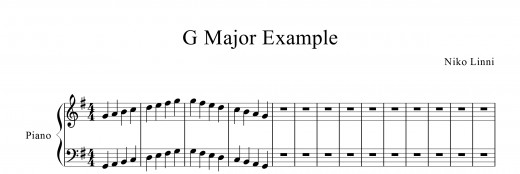
Guns N Roses - Sweet Child O Mine
Next we have G Major, and the appearance of our first Accidental and Key Signature. That Sharp is written on the F Line, which means all notes that would be normally played as F's are instead played as F#. To play a normal F you'd have to use a flat. A famous song that uses G Major is Guns N Roses' "Sweet Child O Mine".
^1 Tonic - G
^2 Supertonic - A
^3 Mediant - B
^4 Subdominant - C
^5 Dominant - D
^6 Submediant - E
^7 Subtonic - F#
^8 Tonic - G
And that was G Major. Getting the hang of things yet?
D Major
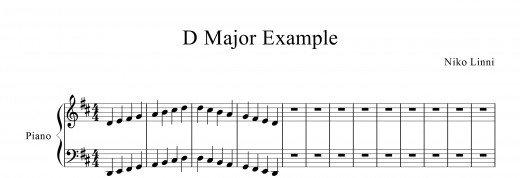
PSY - Gangnam Style
Here comes the next Sharp - D Major has not only F#, but also C#. A well-known song that uses the D Major Scale is PSY's Gagnam Style.
^1 Tonic - D
^2 Supertonic - E
^3 Mediant - F#
^4 Subdominant - G
^5 Dominant - A
^6 Submediant - B
^7 Subtonic - C#
^8 Tonic - D
A Major
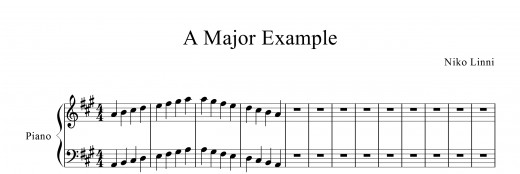
Ozzy Osbourne - Crazy Train
Now we have A Major. Our collection of Sharps keeps increasing - now we're up to F#, C#, and G#. Ozzy Osbourne's "Crazy Train" is an example of a song in A Major.
^1 Tonic - A
^2 Supertonic - B
^3 Mediant - C#
^4 Subdominant - D
^5 Dominant - E
^6 Submediant - F#
^7 Subtonic - G#
^8 Tonic - A
E Major
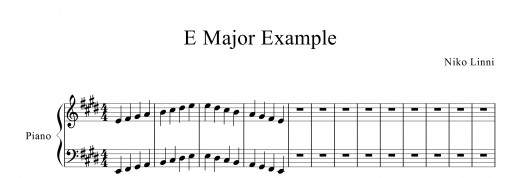
Vivaldi - "Spring" from Four Seasons
E Major continues to up the game, giving us 4 Sharps - make sure as you're reading and playing pieces to keep an eye on the key signature! We're now up to F#, C#, G#, and now D#. Let's take a break from all the rock and present day music to take a look at a classic that uses E Major, Vivaldi's "Spring".
^1 Tonic - E
^2 Supertonic - F#
^3 Mediant - G#
^4 Subdominant - A
^5 Dominant - B
^6 Submediant - C#
^7 Subtonic - D#
^8 Tonic - E
B Major
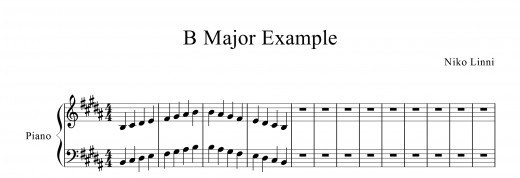
"Finale" from The Firebird Suite
And now we arrive at B Major, getting close to the end of the Major Scales that use Sharps. After this are the other Major Scales that use Flats instead. B Major contains five Sharps: F#, C#, G#, D#, and A#. One of my personal favorite songs, the "Finale" from Igor Stravinsky's Firebird Suite is written in B Major.
^1 Tonic - B
^2 Supertonic - C#
^3 Mediant - D#
^4 Subdominant - E
^5 Dominant - F#
^6 Submediant - G
^7 Subtonic - A
^8 Tonic - B
F# Major
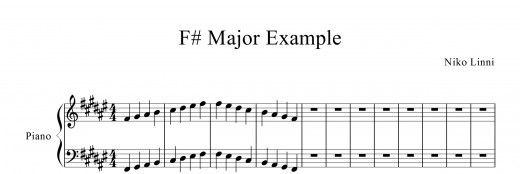
Gorillaz - Feel Good, Inc
F# Major is next, leading us with six sharps - almost all of the notes! This Scale has F#, C#, G#, D#, A#, and E# - remember that E# is the same note as F! A song that uses the F# Scale is Gorillaz's "Feel Good, Inc".
^1 Tonic - F#
^2 Supertonic - G#
^3 Mediant - A#
^4 Subdomiant - B
^5 Dominant - C#
^6 Submediant - D#
^7 Subtonic - E#
^8 Tonic - F#
C# Major
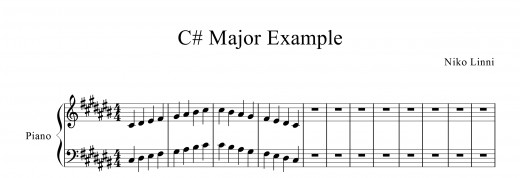
The Beatles - Across the Universe
And now we arrive at the last of the Major Scales that uses Sharps: C# Major. All notes affected by this Key, which has F#, C#, G#, D#, A#, E#, and B#. A famous song that uses the C# Major Scale is The Beatles' "Across the Universe".
^1 Tonic - C#
^2 Supertonic - D#
^3 Mediant - E#
^4 Subdominant - F#
^5 Dominant - G#
^6 Submediant - A#
^7 Subtonic - B#
^8 Tonic - C#
And that's it for Major Scales using Sharps. Now we move on to Major Scales that utilize Flats.
F Major
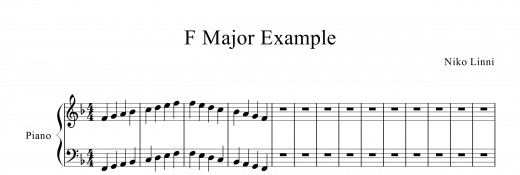
Micheal Jackson - Another Part of Me
Now we begin with the Sharp's evil twin, Flats. The order that notes become Flat is different from Sharps, evident in F Major which has Bb to start with, rather than Fb. A song that uses the F Major scale is Micheal Jackson's "Another Part of Me"
^1 Tonic - F
^2 Supertonic - G
^3 Mediant - A
^4 Subdominant - Bb
^5 Dominant - C
^6 Submediant - D
^7 Subtonic - E
^8 Tonic - F
Bb Major
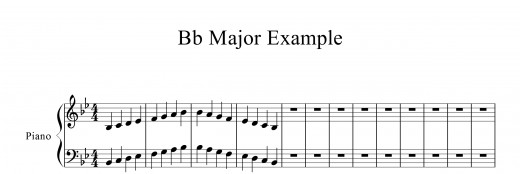
Bb Major is next, upping the ante with two flats - Bb and Eb. Deep Purple's "Smoke on the Water" is a song that most likely uses the Bb Major scale. Watch for that fire in the sky.
^1 Tonic - Bb
^2 Supertonic - C
^3 Mediant - D
^4 Subdomiant - Eb
^5 Dominant - F
^6 Submediant - G
^7 Subtonic - A
^8 Tonic - Bb
So as you can start to see, Flats in these next scales follow a pattern much like the Sharps in the previous series of scales.
Eb Major
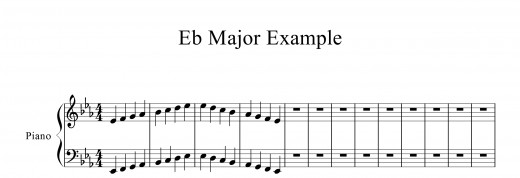
Mussorgsky - The Great Gate of Kiev
Eb Major is next to follow, mixing in a total of three flats: Bb, Eb, Ab. A piece that uses the Eb Major scale is Modest Mussorgsky's "The Great Gate of Kiev". However, the embedded video is an orchestration of the original; "The Great Gate of Kiev", along with the rest of "Pictures at an Exhibition" were originally written for piano only.
^1 Tonic - Eb
^2 Supertonic - F
^3 Mediant - G
^4 Subdominant - Ab
^5 Dominant - Bb
^6 Submediant - C
^7 Subtonic - D
^8 Tonic - Eb
Ab Major
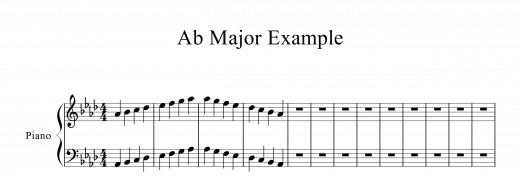
Liszt - Liebestraum No. 3
Now we have Ab Major, which brings the Flat Talley up to four, with Bb, Eb, Eb, Ab, and Db. Like with the Sharps, make sure you keep an eye on that Key Signature so you can be sure that you're playing the correct notes - nothing quite as jarring as playing a note a half step off. A beautiful piece that uses this Scale is Franz Liszt's "Liebestraum No. 3".
^1 Tonic - Ab
^2 Supertonic - Bb
^3 Mediant - C
^4 Subdominant - Db
^5 Dominant - Eb
^6 Submediant - F
^7 Subtonic - G
^8 Tonic - Ab
Db Major
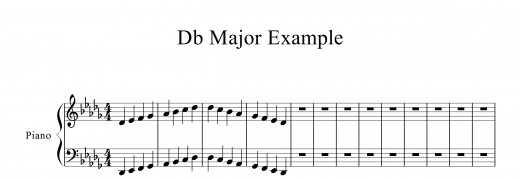
The Killers - Somebody Told Me
Now we have Db Major, adding in one more Flat to give us a total of five Flats: Bb, Eb, Ab, Db, Gb. A pretty neat song that puts the Db Major scale to use is The Killers' "Somebody Told Me."
^1 Tonic - Db
^2 Supertonic - Eb
^3 Mediant - F
^4 Subdominant - Gb
^5 Dominant - Ab
^6 Submediant - Bb
^7 Subtonic - C
^8 Tonic - Db
Gb Major
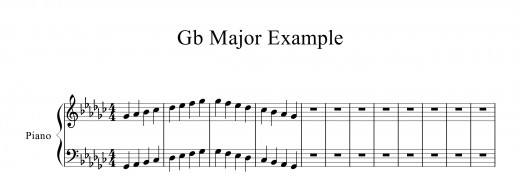
Puddle of Mudd - Blurry
The second to last of the Scales we have to cover in this installment, Gb Major gives us six Flats to deal with: Bb, Eb, Ab, Db, Gb, and Cb. Remember that Cb is the same note as B! Now, a song that puts the Gb Major Scale to use is the song "Blurry" by Puddle of Mudd. I remember hearing that song a lot as a youngster.
^1 Tonic - Gb
^2 Supertonic - Ab
^3 Mediant - Bb
^4 Subdominant - Cb
^5 Dominant - Db
^6 Submediant - Eb
^7 Subtonic - F
^8 Tonic - Gb
Cb Major
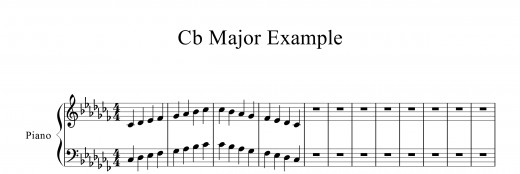
Rush - Limelight
And finally we arrive at the Cb Major Scale - the last of the Major Scales we'll be taking a look at. Here all the notes are Flat - Bb, Eb, Ab, Db, Gb, Cb, and Fb - remember that last one is the same as E! A rockin' song that could be said to use the Cb Major Scale to use is "Limelight" by Rush.
^1 Tonic - Cb
^2 Supertonic - Db
^3 Mediant - Eb
^4 Subdominant - Fb
^5 Dominant - Gb
^6 Submediant - Ab
^7 Subtonic - Bb
^8 Tonic - Cb
Major Scales: Ran!
Well, it looks like we managed to get through all of the Major Scales. Alright! Before we move on to the next set of Scales (The Natural Minor Scales), have a look at this YouTube video here that takes all of the Major Scales we covered in this Hub and gives an audio example of them all, so you can hear - and reference - exactly how these scales can sound. Other than that, this is the end of this installment of Scale Runners. I hope this was just as informative for you as it was for me. Thank you for your time, and I'll see you in the next chapter.
Major Scales Examples
Other Hubs in the Scale Runners Series
Scale Runners #0: Introduction to Scales
Scale Runners #1: Ionian Scales (You are here!)
Scale Runners #2: Aeolian Scales

